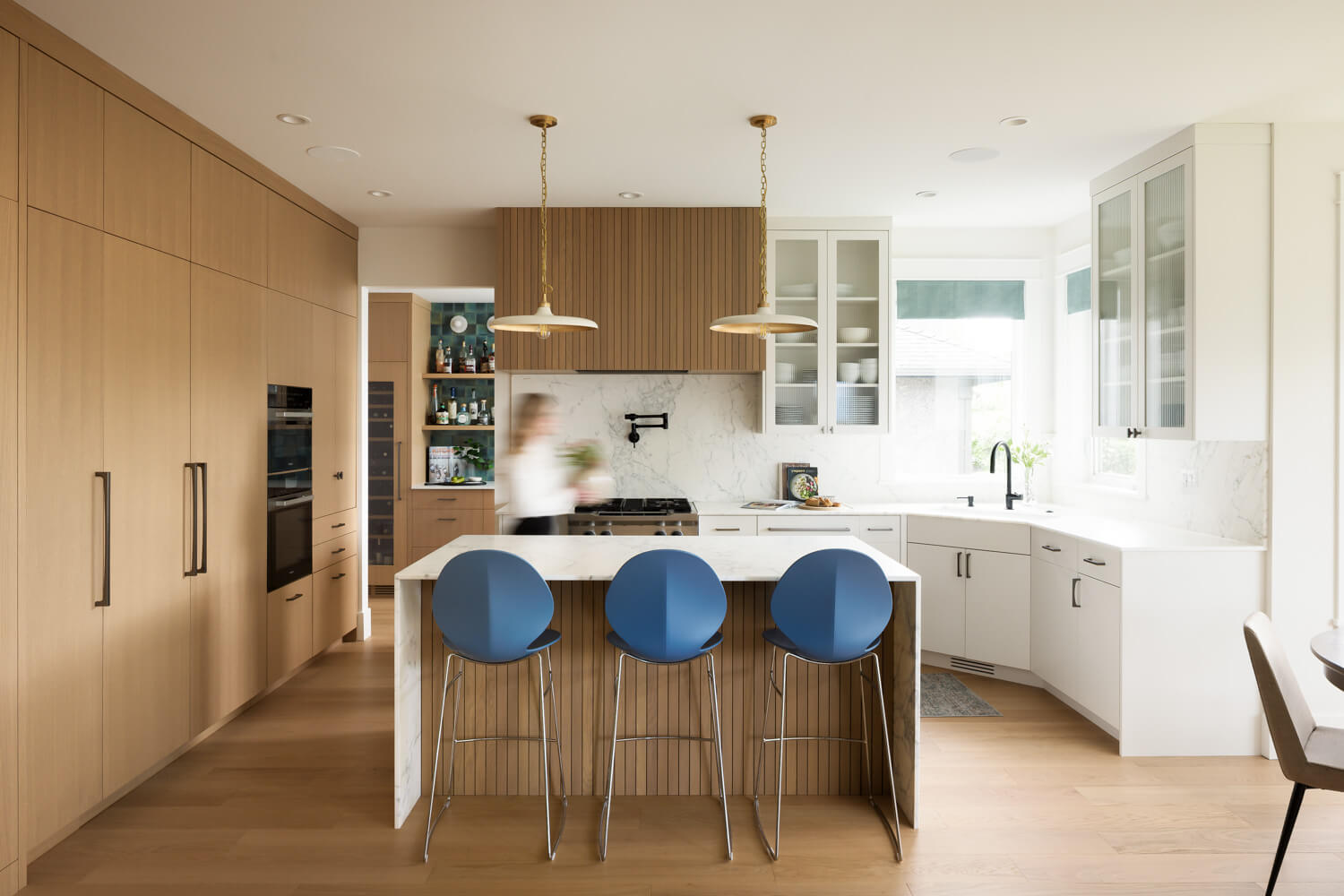So, you’re ready to renovate. You’ve got ideas pinned, samples saved, maybe even a contractor lined up. But then someone drops the question, “Do you have your building permit?”
Suddenly, that spark of excitement turns into a sigh, because the word alone can feel intimidating. I get it.
Permits are not the most glamorous part of a home renovation, but they are one of the most important. In fact, I like to think of a building permit as your renovation’s official green light. It is the city’s way of saying, “We approve your plan. Go ahead, you’ve got this!”
Once you understand how it works, it’s a lot less scary. Let me walk you through the process the same way I do with any of my clients.
What Is a Building Permit and Why Do You Need One?
A building permit is essentially your project’s golden ticket. It’s the city’s approval to move forward safely and legally. Permits exist for a reason:
✓ Safety first – Permits make sure your renovation follows local zoning bylaws, land-use rules, and construction standards.
✓ Protect your investment – They can save you from fines, project delays, or future headaches if you decide to sell. They protect you, your family, and even future buyers of your home.
✓ Zoning and bylaws – They confirm you’re working within the rules of your property and neighborhood.
A good rule of thumb: if you’re changing your home’s layout (like moving walls, adding windows, or creating an addition), you’ll need a permit. Cosmetic updates like painting, swapping cabinets, or replacing flooring? Usually, no permit is required, however I always recommend asking your contractor to confirm rather than assuming.
What Does the Building Permit Process Look Like?
This is the part that overwhelms most homeowners, but I promise, it’s more manageable than it seems. When we guide clients through the process, here’s what happens:
We usually start by creating a drawing package that meets your city’s bylaws. This package typically includes your existing layout, demolition plan, new construction plan, and sometimes extras like exterior elevations, site plans, zoning analysis, or glazing calculations.
Then a structural engineer adds their input. They complete any required calculations or drawings. From there, your contractor or our team submits everything to the city (most cities now accept online applications). We’ll also guide you if additional reports are needed (like asbestos testing or an arborist report).
But what happens next?
Initial Review – Within about 12–14 business days, the city will confirm if the package is complete or request more details.
Follow Up – After a couple of weeks, they may send back a deficiency list (minor fixes like clarifying dimensions or adjusting a note) or request payment if everything looks good.
Possible Field Review – Sometimes, the city schedules a quick inspection before issuing the permit. Usually within about 5 business days.
Approval – Once everything checks out, your building permit is issued, and you’re officially good to go. You can finally start renovating!
Now, what happens if your project doesn’t quite fit the city’s rules?
That’s when the Board of Variance (BOV) comes into play. Think of them as the city’s way of handling special circumstances. They step in when a homeowner faces “undue hardship” or in other words, when the standard rules just don’t work for your situation.
Some real-life examples I’ve seen:
Accessibility updates – Installing a wheelchair ramp that encroaches on the side yard setback.
Inherited quirks or pre-existing changes – Discovering a garage built years ago that no longer meets zoning rules.
Generational updates – Adding a suite for parents or making a home work for multiple generations.
How Long Does It Take to Get a Building Permit For Home Renovations?
To find out your city’s current wait times, try Googling “City of [city name] current building permit wait times.” You’ll usually come across an answer, but keep in mind that these updates are often outdated. A more reliable approach is to ask your design or construction team what the current lead times look like.
Depending on the municipality, we’ve seen permits approved in as little as three weeks, while others have taken several months. The timeline depends both on your area and on how simple or complex your renovation is.
If a BOV submission is needed, it takes longer (often a couple of months in Vancouver, BC) and involves presenting your case in person. It sounds daunting, but with guidance, it’s absolutely doable. Here’s how we make it less stressful:
✓ We (your design team + build team) build your case with a clear explanation of why the variance is necessary.
✓ Your build team will help you connect with neighbors to gather letters of support.
✓ Your build team typically handle the presentation so the board fully understands your situation (however we do support them).
How to Prepare Before Applying for a Building Permit
If you’re starting to plan your renovation, here’s what you can do now to make the permit process smoother:
✓ Contact your city’s building department to confirm permit requirements. Look up “[Your City Name] building department contact info” to get started.
✓ Ask if there are any open permits or unpermitted work tied to your property. Make sure there’s no unfinished business on your property.
✓ Request your latest permit set on file. Get a copy of the most up-to-date records tied to your home.
✓ Compare those records with what actually exists on your property (sheds, decks, additions, etc.). If something doesn’t line up, it’s worth flagging now.
Catching potential issues now will save you time, money, and headaches down the road.
–
Permits may not be the fun part of a renovation, but they’re essential. They protect your home, your investment, and ensure your project is safe and legal. With the right support, the process won’t feel intimidating, it will just feel like another step toward creating the home you love.
Think of them as the roadmap that makes sure your renovation gets from start to finish safely, legally, and without hiccups down the road. Whether it’s us, your contractor, or both, we’ll guide you through every step so you can focus on the exciting part: bringing your vision to life.
So next time someone asks, “Do you have your building permit?” you’ll be ready with a confident YES.
Want to feel even more prepared?
Download our free template and take the guesswork out of your next project. aligninteriordesign.ca/reno

